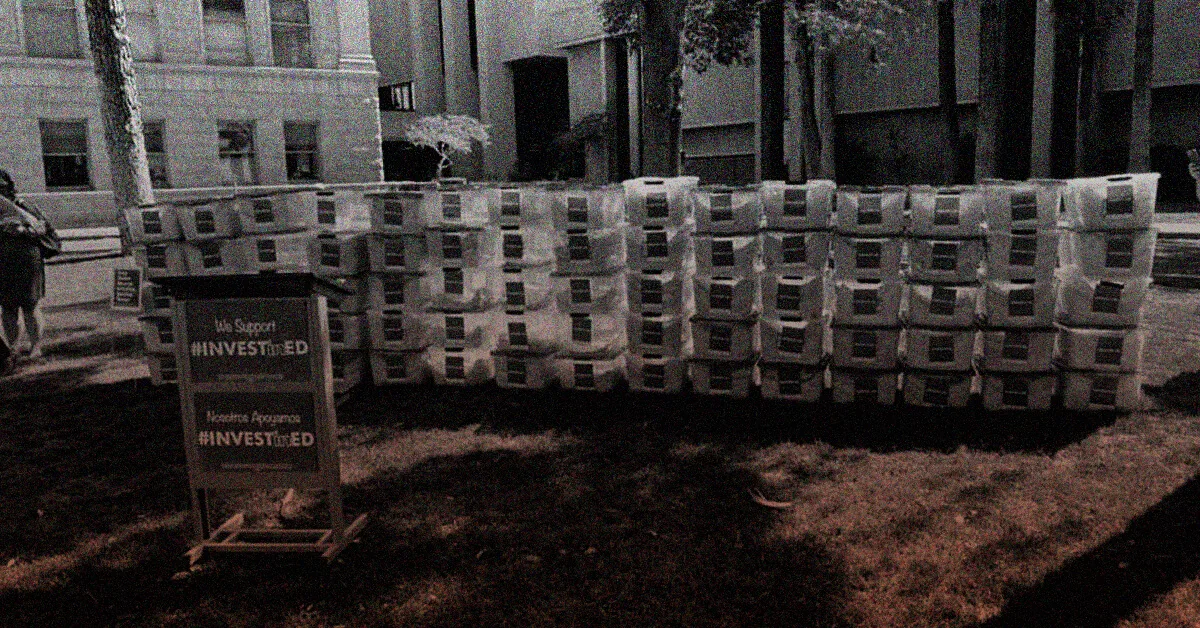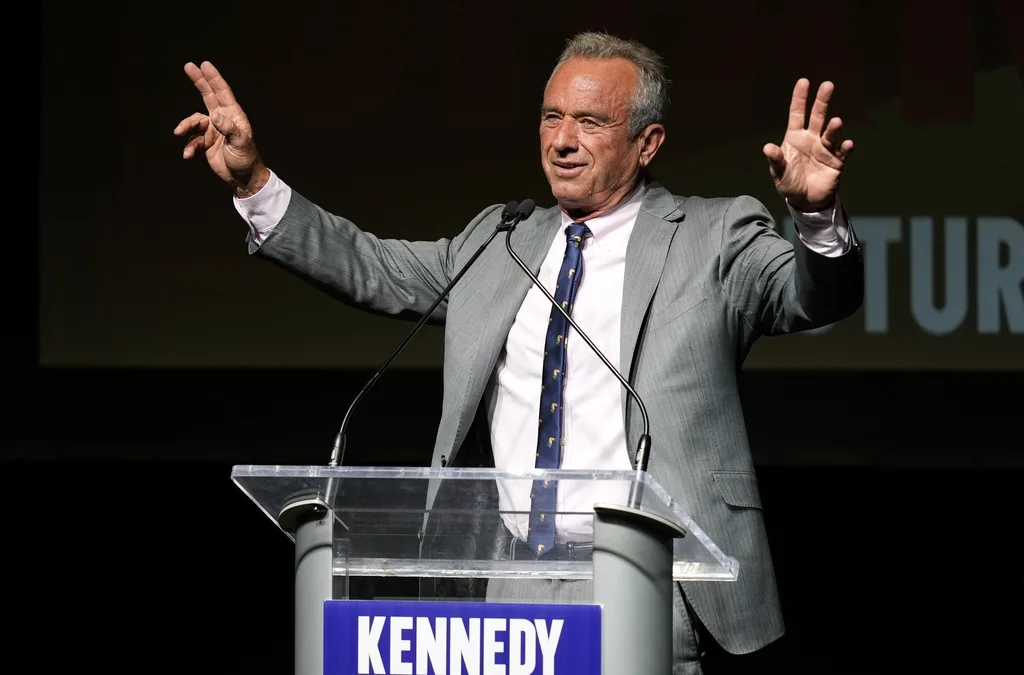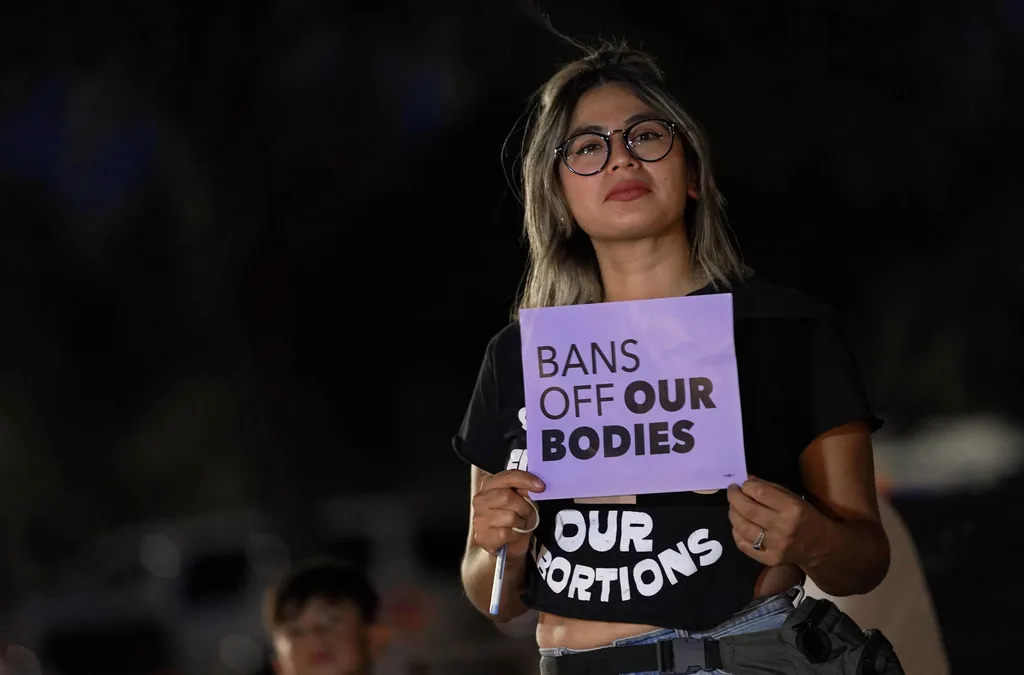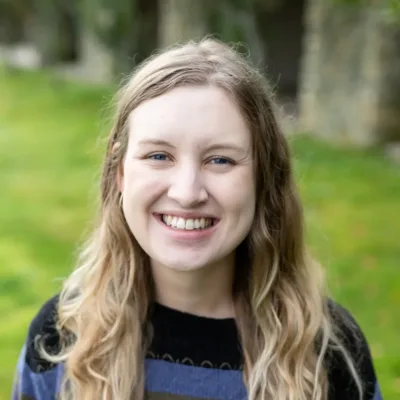
“This virus was the worst thing that happened. But in my own personal opinion, it was also a good thing for education.”
This is part three of a series examining the impact the COVID-19 pandemic has had on Arizona’s education system. Read the full series here.
Most Arizona schools seem to be opting to offer online learning until they meet the state’s three county-level COVID-19 benchmarks for hybrid (part in-person, part online) reopening.
Those benchmarks are:
- A decline in cases or two consecutive weeks of fewer than 100 cases per 100,000 people
- Two consecutive weeks with a percentage of positive tests below 7%
- And two consecutive weeks of hospital visits for COVID-like illnesses below 10%
But some governing boards have been caving to pressure from parents who want their students back to a more normal routine.
Queen Creek Unified School District reopened in-person Aug. 17 despite Maricopa County not yet meeting the benchmarks, leading some teachers to resign. Since the benchmarks were released, the county broke down the data to rate each district, and Queen Creek has since earned a “moderate risk” label and been recommended to open for hybrid.
Some charter schools also pursued reopening before the green light and saw teachers leave.
RELATED: ‘What Will Happen if My Teacher Dies?’: Kids Ask Ducey Tough Questions on Schools Reopening
J.O. Combs Unified School District in Pinal County had planned to reopen Aug. 17, but so many teachers resigned or called out sick the schools had too few staff to open.
At a board meeting later that week, the Combs governing board decided to try again Aug. 31 despite continued pushback from teachers. Then on Aug, 27, they voted to move the date to Sept. 8, committing to open then and not close again unless the state health department requires changes at specific schools.
Educators say the number of teachers resigning over being forced to return to class is only worsening the already existing shortage, which sat at more than 1,800 open positions last year.
As time goes on and COVID-19 numbers improve, more schools are feeling confident in welcoming students back.
But it’s not clear that even meeting those criteria will be enough to make some teachers feel comfortable coming back. A survey of Combs staff members found that while about 40% were willing to come back once the benchmarks were met, 15% would still have concerns.
No Unified Strategy
Since Arizona’s government began conjuring up reopening plans, leaders like Gov. Doug Ducey and health department Director Dr. Cara Christ have said they want to allow for flexibility because some areas of the state experienced the virus worse than others.
But some teachers and parents say they would have rather seen a more unified strategy for schools.
Kelley Fisher, kindergarten teacher for Deer Valley Unified School District, said making the benchmarks recommendations and not rules was a mistake.
“I would like to see our governor find a backbone and make these benchmarks mandates statewide,” she said.
Marisol Garcia, vice president of the Arizona Education Association, agreed.
“My concern is that in lieu of leadership, both on a national level and from our governor, of saying out loud, we need schools to be safe, here are the funds to make sure it’s safe … teachers are having to make these decisions on their own,” Garcia said. “And school boards are really having to make these decisions based sometimes on a very, very vocal minority. And so you’re pitting parents and teachers against each other when it’s completely unnecessary.”
Teachers also said they were disappointed in the state Legislature for adjourning early and not calling a special session to approve emergency funding for schools needing extra funds for supplies and staff.
RELATED: Arizona Teacher Union VP Says Biden Will Fix DeVos’ Education Mess
“I would like more funding to ensure that we can hire the staff to make sure the schools are cleaned and that all of our staff and students have the protective gear that they need to stay safe in the schools,” Fisher said.
And Karen Treon, a Scottsdale mom with two kids in the public school system, said she recognized the stress placed on educators.
“I just feel like our school boards and our districts are in such an unfortunate position that they never should have been put in. I’m very frustrated by that,” she said. “Our Legislature never came back into special session to provide any kind of funding, any kind of supports for schools, any kind of additional staffing, any money for physical changes to the buildings. The governor has been just vague and reactive and unwilling to kind of really put out a plan that would allow school districts to make good choices and focus on education.
What Could Change
There is some hope. After 2018’s disappointment, the Invest in Ed initiative will be back on the ballot this fall.
A legal challenge, arguing the initiative was misleading, succeeded two years ago and kept it out of the election. But this time a similar challenge was shot down by the Arizona Supreme Court in mid-August––meaning voters will decide on the proposal in November.
The initiative calls for a tax increase on individuals making over $250,000 and households making over $500,000. Those people would pay a 3.5% income-tax surcharge on what they make over those thresholds.
RELATED: Invest in Ed Initiative Wins Appeal to Appear on November Ballot
The extra charge wouldn’t affect most Arizonans. In fact, it targets only the top 1% of earners.
Then, the money raised would go to K-12 public classrooms, broken down like this:
- 50% to hiring and raising pay for teachers and classroom support staff (ex. Counselors, nurses)
- 25% to hiring raising pay for student services support staff (ex. Classroom aides, bus drivers)
- 12% to supporting vocational education programs
- 10% to teacher mentoring and retention programs
- And 3% to the Arizona Teachers Academy, which provides college students pursuing education degrees with scholarships
Rebecca Garelli, a science educator who helped push for Invest in Ed the first time around, said she is looking forward to the election.
“It’s exciting, because what we know is that we have community support on our side,” she said. “And so finally, the voters have a chance to say that they support us. They will show it through the ballot, and that’s exciting, because we know they will.”
And Fernando Parra, superintendent of the Nogales Unified School District, said he thinks education will be even more so on voters’ minds this time around thanks to COVID-19.
“This virus was the worst thing that happened, but in my own personal opinion, it was also a good thing for education,” he said. “Not because of the virus and what it’s causing, but because it brought it to the attention and made everybody within our society more aware of how important public education is, how important our teachers are, and how important it is to invest and to fund education.”
Superintendent of Public Instruction Kathy Hoffman, the state’s top education official, has also expressed support for the initiative.
“Educators worked tirelessly to give Arizonans the option of increasing public school funding in November,” she tweeted last month. “Let’s get to work to #InvestinED!
Politics

He said what? 10 things to know about RFK Jr.
The Kennedy family has long been considered “Democratic royalty.” But Robert F. Kennedy, Jr.—son of Robert F. Kennedy, who was assassinated while...

Kari Lake calls on Arizona county sheriffs to enforce 1864 abortion ban
Republican candidate for US Senate Kari Lake on Saturday seemed to solidify her support for Arizona’s total abortion ban and called on county...
Local News

Biden marks Earth Day by announcing $7 billion in solar grants
The Biden administration on Monday announced the recipients of its Solar For All Program, a $7 billion climate program that aims to lower energy...

Opinion: Don’t think Arizona abortion bans are harming women? Think again.
This is part TWO in a series on the increase in violence against women since the US Supreme Court overturned Roe v. Wade, and the future of abortion...





